Resting Heart Rate Monitor Readings Are Not Steady
For those who train with heart charge per unit monitors often, y'all probably know all too well know the tell-tale sign that your little device is lying to you lot about your centre rate. It starts off fairly innocently with a gentle rise in heart rate (HR). Merely before y'all know information technology your HR is blistering through the 150's, 160'south, and right on through the 200bpm glass ceiling. Sometimes you might even reach into the mid-200's.
Later on yous finish your activity and get back to your computer, y'all'll probably see something like this – a major Hour spike, followed past more than normal HR activity:
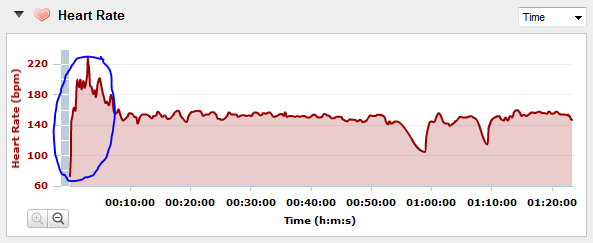
Frustrated, you lot poke at your 60 minutes monitor some, perhaps browse the Internets a bit – just in full general forget about it, until information technology happens again.
Well, let me assist ya out and explain why and what information technology's doing. And…I can probably even help ya fix it too!
Proper Wearing Methodology:
Let's showtime start with how to put the strap on. Every bit the nigh important affair to practise is ensure yous're wearing it correctly. On the Garmin Pismire+ straps, yous'll desire to ensure the Garmin logo is right-side up, and the electrode side of the strap is against your bare skin. Which side is the electrode side? Well, the side with the little bands, not the shiny side. I've circled these in the pictures below:
Garmin Classic Hr Strap:
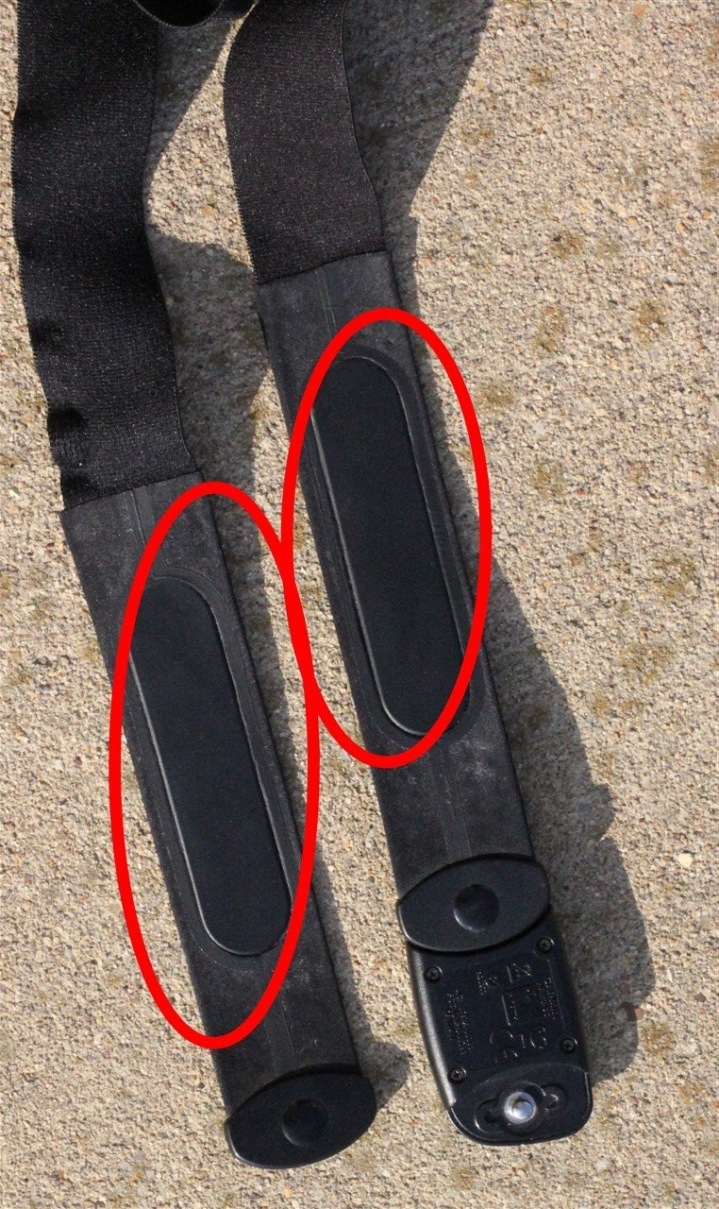
Garmin Premium Hr Strap (also called soft 60 minutes strap):
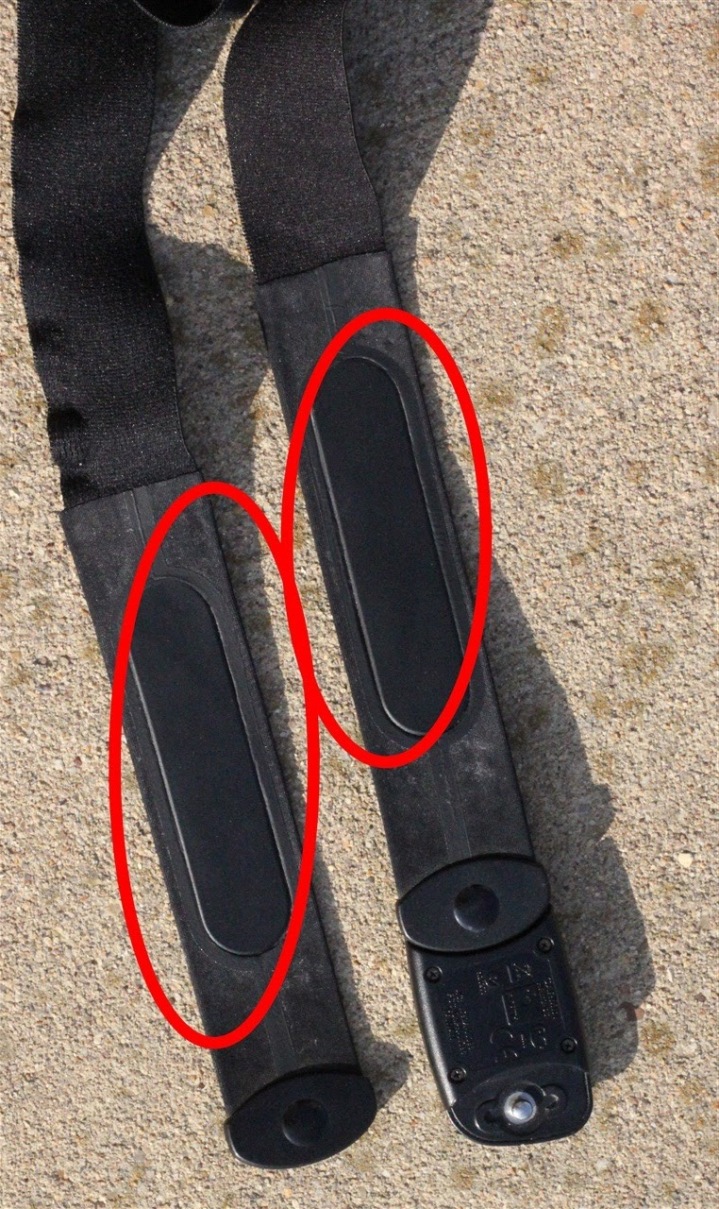
And for all you lot Polar folk, their coded HR strap:
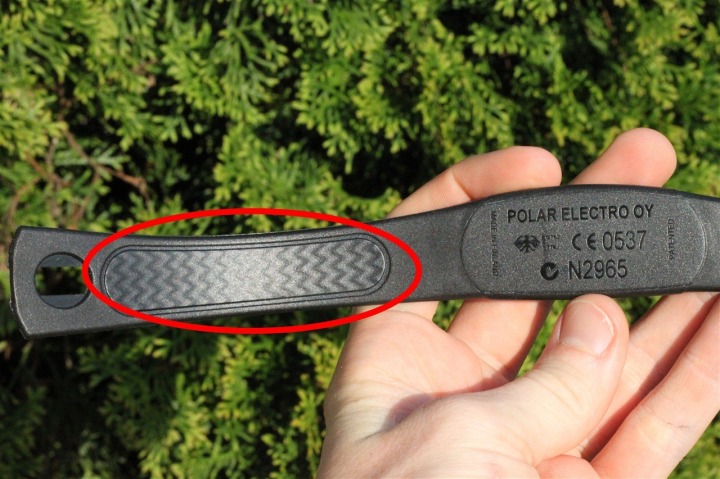
(Minor side annotation, as yous may know, none of the Garmin ANT+ Hr straps will read 60 minutes underwater more than than an inch or two abroad from the watch, as I showed in my 310XT review while underwater. Yet, the T31 coded straps from Polar will work underwater with their corresponding Polar units – merely ensure it's noted as T31 coded. Also notation that you cannot mix Polar Hour straps/units with Garmin HR straps/units.)
Now, i last of import item to note is that it goes UNDER your shirt confronting your skin. It should non be worn over your habiliment. Besides, the ANT+ folks note that from a placement standpoint "the strap is worn on the ribcage, below the pectoral muscles or breasts".
All proficient and you're still having bug? Onto the next department we go…
The root of all bug:
So assuming that you've got it all correctly 'installed', let's expect at what typically causes the spike in Hour (if it's over 200bpm, it's likely not legit unless you're a seven year old).
1) No moisture, dry out air: During the winter months the air is often adequately common cold, and fairly dry. This ways that you're less likely to have moist skin (due to even merely peel perspiration), and even less likely to be generating any sweat right from the start of the conditioning. This in turns lowers your electrical conductivity ability from a readings perspective. Which, ways you oft get incorrect readings. Only introducing whatsoever wet at all will usually remedy the situation – at least until you begin sweating enough to permit that practice its chore. We'll talk near wet additives in the next section.
2) Synthetic shirts (quick dry out/tech shirts): While all of usa love not being suffocated in cotton wool shirts, an unfortunate side event is that those constructed shirts (normally called quick dry or 'tech' shirts) produce additional static electricity buildup that messes with the readings. This is most common when your skin and air are both rather dry out, and very piddling wet is present. In about all cases, simply applying moisture will immediately resolve this issue. Yous tin can effort rubbing the strap or your shirt with an antistatic amanuensis – the Emmet+ folks recommend simply a bounce dryer sheet, as that tin aid in some cases. As a side note, some of the Polar straps actually have an antistatic component built into them that helps to convalesce this problem to some degree.
three) Wind on the bike: Ane fairly common issue particularly in the bound/autumn when yous're wearing simple bicycle jerseys but the air current and lukewarm air temperature keeps you relatively dry out, is that when yous go downwards hills fast, or simply the wind hits the right way, you'll get wrong readings. This is often caused when the current of air funnels downwardly the front of your bike bailiwick of jersey and either induces boosted static buildup as noted before, or introduces false readings through vibrations. I can't count the number of times where information technology seemed my 60 minutes was straight correlated to how fast I was descending – despite the fact that I was working less. In this case, your best bet is either getting more gel to increment conductivity, or simply twisting the 60 minutes strap around towards your side a chip – that usually resolves is for me. I don't recommend trying to lick the strap while descending at 40MPH…many things can go wrong there resulting in yous licking the pavement instead.
iv) Electrical Interference (powerlines, train lines, etc…): This isn't typically reported on the Garmin's, but more the case on the Polar's. The Polar'due south use electromagnetic signals to ship the data from the coded strap to the watch, which tin be interfered with by high tension power lines. The Garmin's on the other hand apply the 2.4Ghz frequency and don't accept the power line issues typically.
The fixes:
The good news here is that there are a ton of easy fixes that you can rapidly try out to
1) Sweat: This offset ane is a bit obvious – only will explain why the trouble frequently goes away after just a few minutes of action. Once you lot starting time sweating information technology introduces moisture which in turn improves conductivity. This in plow makes the Hr strap happy and you lot get meliorate readings. So basically…work harder. 🙂
two) Licking it: This is the simplest option – and quite honestly what I practice 99% of the time. I just give it a big lick. Past 'it', I hateful the two sensor pads on the back of the strap. This will unremarkably 'tide me over' until I get-go sweating enough to proceed everything all happy. And don't worry folks – a HUGE LONG thread on BT the other day confirms that everyone else does it too. Run into, here'southward my lick-job:
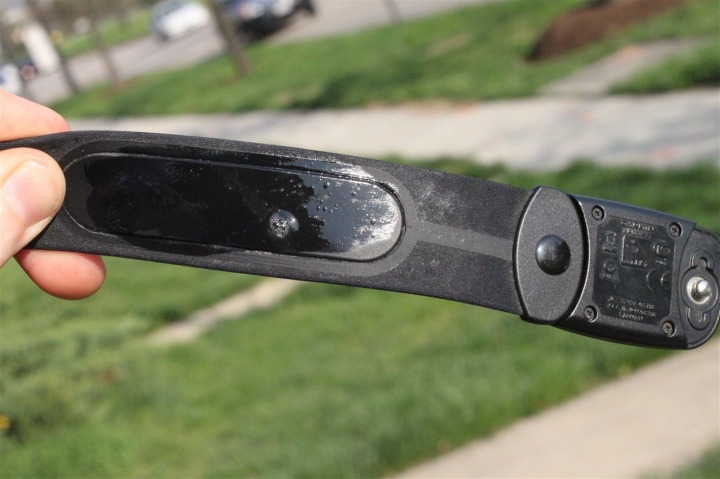
3) Middle Rate Gel: If you lot suck at licking, and then you tin instead use electrode gel to improve conductivity. This is what's typically used in medical situations such every bit an EKG where you're trying to become a better reading/conductivity. I actually use the gel mostly during the wintertime considering I've found that many times on easy runs I'll never really produce a sweat due to the cold, and thus subsequently a short bit of time my lick-job (every bit noted higher up), will actually vaporize. The Hr gel is designed to terminal considerably longer on your peel/strap. This stuff is incredibly cheap, and the bottle will last you a long long fourth dimension. Here's my bottle I bought 2 winters ago:
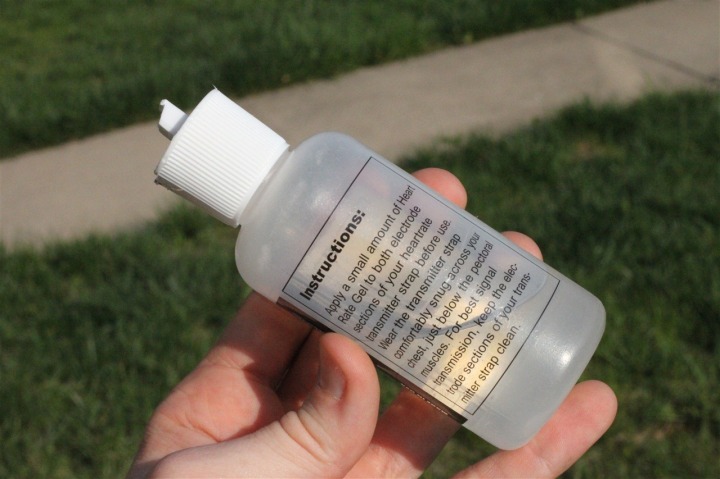
Y'all tin can option it upwards normally every bit your local running store, or online for about $5-10. P.S., one little tip for those common cold winter days (I know, information technology'due south getting warmer at present though), is to stick it in a sunny window sill, that will make it nice and warm when yous put it against your skin:
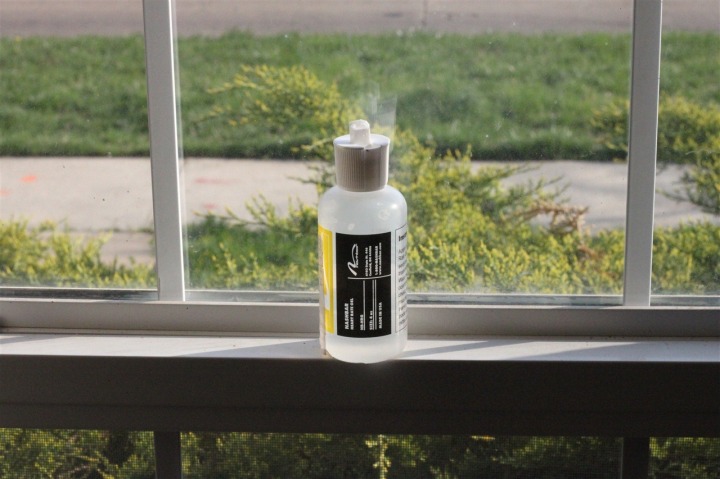
4) Changing the strap position: Depending on what may be causing your exact situation, i choice is to just change the position. Try sliding the strap to the right, left, or up/down. Some folks fifty-fifty wear it on their dorsum with great success. In fact, when I'grand having a 24-hour interval with lots of issues descending on the bike and the Hr being erratic – I'll but slide the strap around my side a bit, then the contact portions of the strap kinda straddle my breast and back. Works perfectly!
5) Replacing the batteries: Finally, terminal but not least – sometimes information technology's just the batteries getting old. You can pickup the simple coin replacement battery at nearly whatsoever drugstore, and fifty-fifty almost grocery stores these days. Information technology only takes a few seconds to open up the dorsum door of the strap and bandy out the battery. I usually accept at least one spare bombardment in my tri bag at all times, just in case.
Wrap Up
Hopefully this volition help you lot get through those pesky centre rate reading errors and get on with your workout. If y'all have any related tips to fixing foreign 60 minutes readings, feel gratuitous to get out them below in the comments!
Source: https://www.dcrainmaker.com/2010/04/troubleshooting-your-heart-rate.html
0 Response to "Resting Heart Rate Monitor Readings Are Not Steady"
Post a Comment